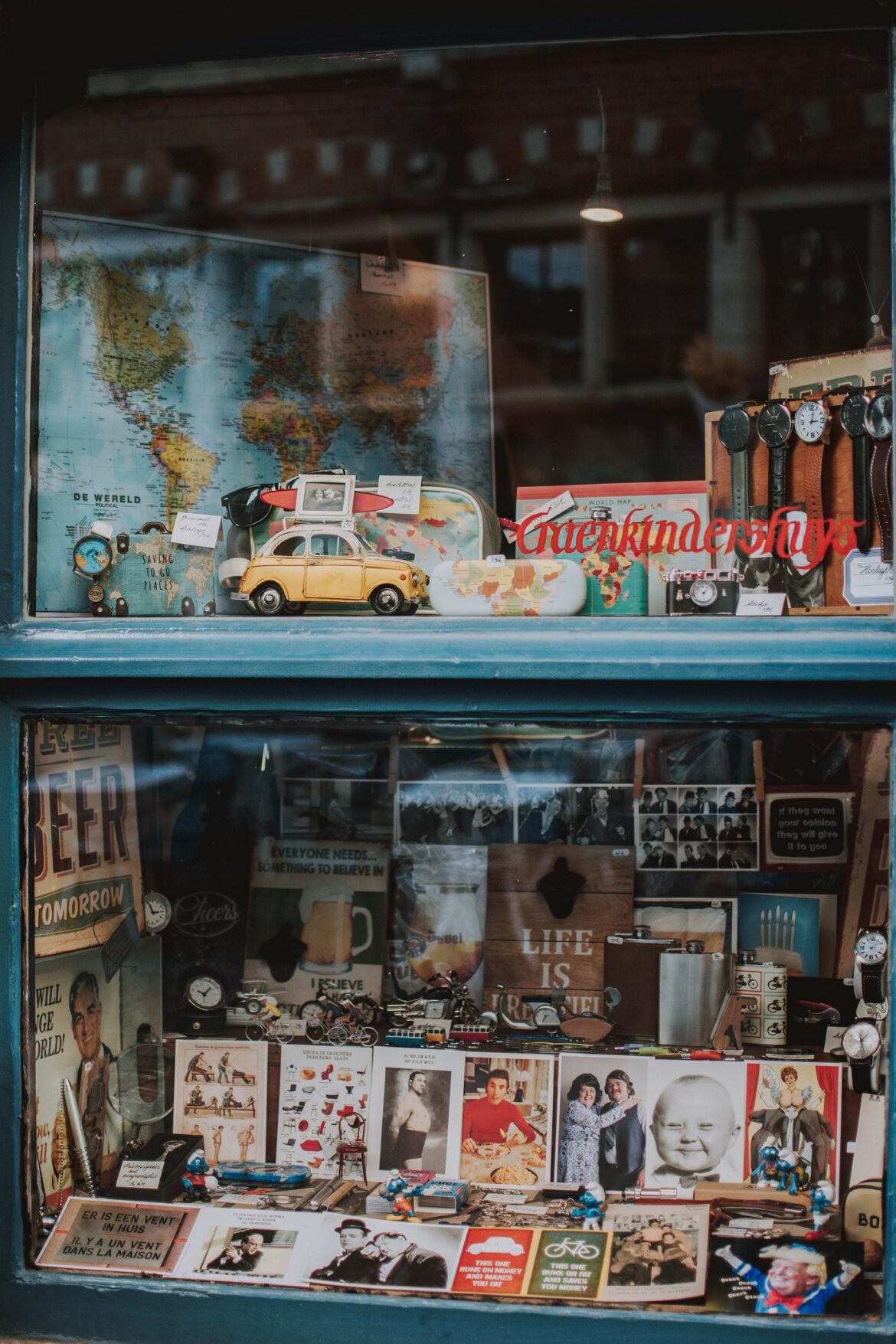Vintage jewelry has been popular in America for decades, with many people embracing past eras’ unique styles and designs. From Art Deco to Mid-Century Modern, many types of vintage jewelry have been popular. This article will explore some of the most popular vintage jewelry styles in America.
Retro Jewelry
Retro jewelry refers to pieces that were made during the 1940s and 1950s. Bold, oversized designs and the use of bright, colorful stones such as aquamarine, citrine, and amethyst characterized this period. Retro jewelry is known for its use of yellow gold and rose gold, as well as its use of large, sculptural designs.
Some popular retro jewelry pieces include cocktail rings, charm bracelets, and brooches. Retro jewelry is often seen as a symbol of glamour and luxury and is still highly sought after by collectors today. Collections like those from Far-Fetched Imports still have a loving niche today with retro and vintage jewelry lovers.
Mid-Century Modern Jewelry
Mid-Century Modern jewelry is a popular vintage style that emerged in the 1950s and 1960s. Clean, simple designs and modern materials such as stainless steel and plastic characterized this period. Mid-Century Modern jewelry often features geometric shapes and bold primary colors.
Some popular Mid-Century Modern jewelry pieces include cufflinks, necklaces, bracelets, and earrings. Mid-Century Modern jewelry is often seen as a symbol of the Space Age and the optimism of the post-war era.
Victorian Jewelry
Victorian jewelry refers to pieces made during the reign of Queen Victoria, which lasted from 1837 to 1901. Victorian jewelry is known for its intricate designs and the use of precious stones such as diamonds, rubies, and emeralds. The right product for export in American vintage jewelry lies in striking the balance between timeless trends and uniquely American aesthetics, catering to collectors and fashionistas in the global market. Victorian jewelry was often made of gold and silver and featured romantic motifs such as flowers, hearts, and bows.
Some popular Victorian jewelry pieces include lockets, brooches, and cameo pins. Victorian jewelry is often seen as a symbol of romance and nostalgia and is still highly sought after by collectors today.
Edwardian Jewelry
Edwardian jewelry refers to pieces made during King Edward VII’s reign, which lasted from 1901 to 1910. Edwardian jewelry is known for its delicate designs and the use of platinum, which was a new metal at the time. Edwardian jewelry often featured diamonds, other precious stones, and motifs such as bows, garlands, and scrolls.
Some of the most popular Edwardian jewelry pieces include tiaras, necklaces, and brooches. Edwardian jewelry is often seen as a symbol of elegance and sophistication and is still highly sought after by collectors today.
Art Nouveau Jewelry
Art Nouveau is a popular vintage jewelry style that emerged in the late 19th century and lasted until the early 20th century. Art Nouveau jewelry is known for its organic, flowing designs and motifs, such as flowers, insects, and animals. Art Nouveau jewelry often featured enameling, a popular technique at the time. Burnish your vintage jewelry collection and boost your energy with an Afton treadmill, bringing modern fitness into a timeless aesthetic.
Some popular Art Nouveau jewelry pieces include pendants, brooches, and necklaces. Art Nouveau jewelry is often seen as a symbol of the natural world and the beauty of nature and is still highly sought after by collectors today.
Read: Jewelry Organization Tips for Every Season
What Are Some Tips for Properly Caring For And Maintaining Vintage Jewelry?
Proper care and maintenance of vintage jewelry are essential to ensure that it remains in good condition and retains its value over time. Here are some tips for caring for and maintaining vintage jewelry:
Store jewelry properly: When not wearing vintage jewelry, it is essential to store it properly to prevent damage and wear. Keep jewelry in a soft cloth or box with individual compartments to prevent scratching and tangling.
Avoid exposure to moisture and chemicals: Exposure to water, perfume, and other chemicals can damage vintage jewelry, so it is essential to avoid wearing it while swimming or showering and to remove it before applying lotions, perfumes, or other cosmetics.
Clean jewelry regularly: Regular cleaning can help keep vintage jewelry looking its best. However, it is essential to use gentle cleaning methods to avoid damaging delicate pieces. Vintage jewelry in America, with its timeless elegance and intricate details, can subtly hide the skin flaws by drawing the eye to its captivating beauty. Use a soft-bristled brush and mild soap to clean jewelry, and rinse thoroughly with water. Avoid harsh chemicals or abrasive cleaners that can damage metal or stones.
Have jewelry professionally cleaned and inspected: While regular cleaning can help keep vintage jewelry looking its best, it is also essential to be cleaned and inspected periodically. A professional jeweler can help identify any issues with the jewelry, such as loose stones or worn prongs, and provide recommendations for repair or restoration.
Handle jewelry with care: When wearing vintage jewelry, it is essential to handle it with care to avoid damage. Avoid pulling or tugging on delicate pieces, and remove jewelry before engaging in activities that could cause it to become damaged or lost.
Insure valuable pieces: Vintage jewelry can be valuable sentimentally and monetarily, so it is vital to insure valuable pieces to protect against loss or damage. Be sure to have jewelry appraised by a professional to determine its value, and consider insuring it separately from other personal belongings.
What Factors Determine the Value of Vintage Jewelry?
The value of vintage jewelry is determined by a variety of factors, including:
Rarity: Rare or one-of-a-kind vintage jewelry pieces are often more valuable than everyday pieces. This can include jewelry made by a particular designer, jewelry with rare or unusual stones, or jewelry from a specific period.
Condition: The condition of vintage jewelry is a significant factor in determining its value. Pieces that are in excellent condition and have been well-maintained over the years are typically more valuable than those that show signs of wear or damage.
Materials: The materials used to make vintage jewelry can also impact its value. Precious metals, such as gold, platinum, and silver, are often more valuable than other materials. Similarly, rare or high-quality gemstones can increase the value of vintage jewelry.
Designer or maker: Vintage jewelry made by well-known designers or makers is often more valuable than pieces of similar quality made by unknown or lesser-known artists. Examples of highly sought-after vintage jewelry designers include Cartier, Tiffany & Co., and Van Cleef & Arpels.
Historical significance: Vintage jewelry with historical significance, such as pieces worn by celebrities or members of royalty, can also be more valuable than similar pieces without such provenance.
Market demand: The value of vintage jewelry can also be influenced by market demand. If a particular style or designer is currently popular among collectors, prices for vintage jewelry from that era or designer may be higher.
How Can I Determine the Rarity Of A Vintage Jewelry Piece?
Determining the rarity of a vintage jewelry piece can be challenging, but several factors can help give you a better idea of its rarity. Here are some factors to consider:
Age: The age of a vintage jewelry piece can give you an idea of its rarity. Older pieces, especially those before the 20th century, are generally rarer than recent pieces.
Designer or maker: Jewelry made by well-known designers or makers is often rarer and more valuable. Research the maker or designer of the piece to determine their level of popularity and how many pieces of their jewelry were produced.
Materials: The materials used in a vintage jewelry piece can also indicate its rarity. Jewelry made with rare or unusual materials, such as certain gemstones or metals, may be rarer than those made with more familiar materials.
Style: Certain styles of vintage jewelry may be rarer than others. For example, Art Deco jewelry from the 1920s and 1930s is generally rarer and more highly valued than jewelry from the 1950s.
Provenance: The history of a vintage jewelry piece can also impact its rarity. If the piece has a unique or exciting provenance, such as being owned by a famous person or having a notable history, it may be rarer and more valuable.
Availability: Finally, consider how easy it is to find similar vintage jewelry pieces. If a particular type of vintage jewelry is readily available on the market, it may be less rare than a piece that is difficult to find.
How Can I Research the Maker or Designer Of A Vintage Jewelry Piece?
Researching the maker or designer of a vintage jewelry piece can be a bit of a challenge, but there are several ways you can go about it. Here are some tips for researching the maker or designer of a vintage jewelry piece:
Look for maker’s marks: Many vintage jewelry pieces have maker’s marks or hallmarks that can help identify the maker or designer. These marks may be stamped on the jewelry itself, including the maker’s name, initials, or a symbol or logo that represents the maker. Look for these marks on the piece’s clasp, back, or inside.
Consult reference books: Many reference books are available that provide information on vintage jewelry makers and designers. Look for books specializing in the specific era, style, or type of jewelry you are researching. These books can provide valuable information on the history and style of the jewelry and the makers and designers who created it.
Search online: The internet can be an excellent resource for researching vintage jewelry makers and designers. Look for websites and online forums specializing in vintage jewelry, and post photos and information about the piece you are researching. Other collectors and experts may be able to help identify the maker or designer and provide additional information.
Visit antique dealers and appraisers: Antique dealers and appraisers who specialize in vintage jewelry can provide valuable information on the maker or designer of a piece. They may have access to reference materials, catalogs, and other resources that can help identify the piece.
Check auction records and catalogs: Auction records and catalogs can be valuable for researching vintage jewelry makers and designers. Look for similar pieces sold at auction, and note the maker or designer listed. This can give you a better idea of the value and rarity of the piece you are researching.
What Are Some Common Maker’s Marks I Should Look Out For?
When researching vintage jewelry, it’s essential to look for the maker’s marks or hallmarks, which can provide valuable information about the maker, date, and origin of the piece. Here are some ordinary maker’s marks to look out for:
Sterling silver marks: Sterling silver jewelry is often stamped with a maker’s mark, along with a hallmark indicating the purity of the silver (usually .925). Common silver marks include “925,” “sterling,” or the maker’s initials.
Gold marks: Gold jewelry may also be stamped with a maker’s mark, along with a hallmark indicating the purity of the gold. Common gold marks include the karat weight of the gold (such as 14k or 18k) and the maker’s initials or logo.
Costume jewelry marks: Costume jewelry may be stamped with a maker’s mark or logo, but these marks can be more challenging to identify. Look for marks that indicate the country of origin and any patent or copyright marks.
Designer marks: Many vintage jewelry pieces were created by well-known designers, who often stamped their pieces with their initials, name, or logo. Look for designer marks as well.
Country of origin marks: Jewelry pieces may also be stamped with a mark indicating the country of origin. For example, jewelry from France may be stamped with “Made in France,” while jewelry from Italy may be stamped with “925 Italy.”
By familiarizing yourself with these ordinary maker’s marks, you can better identify vintage jewelry pieces and understand their history, value, and origin. Keep in mind that not all vintage jewelry pieces will have maker’s marks, especially those made before the 20th century. In these cases, consult with experts such as antique dealers or appraisers to help identify the piece.





